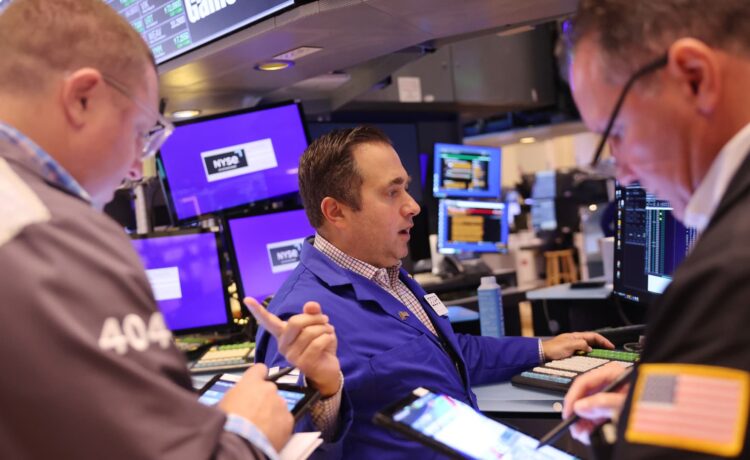Here’s our Club Mailbag email [email protected] — so you send your questions directly to Jim Cramer and his team of analysts. We can’t offer personal investing advice. We will only consider more general questions about the investment process or stocks in the portfolio or related industries. This week’s question: Hi Jim! I’ve been holding a S & P Index fund and up about 20%. Should I sell now if I’m going to need the money in the next year or so? Trying not to panic, but worried I might [not] have what I need when the time comes. Thanks, Tracy While we don’t provide individual investing advice, the question does speak to the broader issue of taking risks now in hopes of increasing your returns later. Buy low and sell high is the name of the game for the kind of long-term, fundamental stock investing we advocate at the Club. And, when it comes to risk, and more specifically an investor’s risk appetite, there are two primary considerations: ability and willingness. Ability is determining whether you can afford to take a risk without making major life changes or suffering big financial repercussions. Willingness, on the other hand, is deciding whether that risk is worth taking. There is no one-size-fits-all box. Some investors, for example, may not be willing to take on the risk of equities and stick strictly to the bond market. Others may be ready to concentrate in risky bets, or even gamble on zero-day-to-expiration options. When weighing the two, ability should always take priority over willingness. Think of it as living within your means. We may want to splurge on a big expense. We may even be willing to do it. However, overextending ourselves beyond what our financial situation allows for is a recipe for disaster. As we’ve been reminded recently, the stock market can turn on a dime. The risk of a decline of 10% or more from recent highs, known on Wall Street as a correction, is always with us. That’s why equities tend offer the best rewards on average, over time than any asset class. Risk and reward are tied at the hip. Back to the question of whether to take profits on an S & P index fund position up 20%, an investor may be willing to stay invested — but the more important question is, what does your situation look like should the market move lower? How big of an issue will it be if the market does drop another 10% or 20% over the next year? That’s not our base case at the Club. But it is certainly on the table in any given year, and we have plenty of catalysts for volatility between now and then, including a U.S. presidential election and a Fed still trying to thread the needle of lowering inflation while avoiding a recession — not to mention, geopolitical concerns about China’s stance on Taiwan; Russia’s war in Ukraine; and a border Mideast conflict involving Iran. Thinking through your ability to take the risk of staying invested and weighing it more heavily than you willingness to take that risk should help you determine if the right course of action is to stay invested in the S & P 500 or to consider something else, such as a safe and secure 12-month CD yielding about 5%. If you need the money right now, or in the near future, and you can’t afford to lose any of it or wait for a bond to mature, cash may be your best bet. It does not have to be either/or, and it doesn’t have to be all at once. You could always trim your market investments to a point where a large drawdown won’t impact you as badly because you’ve reallocated some of the money to safer ground. In other words, the same amount of money would be lost in a 10% correction if you’re 100% invested as would a 20% decline, known as a bear market, if you’re only 50% invested in the index. (See here for a full list of the stocks INJim Cramer’s Charitable Trust.) As a subscriber to the CNBC Investing Club with Jim Cramer, you will receive a trade alert before Jim makes a trade. Jim waits 45 minutes after sending a trade alert before buying or selling a stock in his charitable trust’s portfolio. If Jim has talked about a stock on CNBC TV, he waits 72 hours after issuing the trade alert before executing the trade. THE ABOVE INVESTING CLUB INFORMATION IS SUBJECT TO OUR TERMS AND CONDITIONS AND PRIVACY POLICY , TOGETHER WITH OUR DISCLAIMER . NO FIDUCIARY OBLIGATION OR DUTY EXISTS, OR IS CREATED, BY VIRTUE OF YOUR RECEIPT OF ANY INFORMATION PROVIDED IN CONNECTION WITH THE INVESTING CLUB. NO SPECIFIC OUTCOME OR PROFIT IS GUARANTEED.
Here’s our Club Mailbag email [email protected] — so you send your questions directly to Jim Cramer and his team of analysts. We can’t offer personal investing advice. We will only consider more general questions about the investment process or stocks in the portfolio or related industries.
This week’s question: Hi Jim! I’ve been holding a S&P Index fund and up about 20%. Should I sell now if I’m going to need the money in the next year or so? Trying not to panic, but worried I might [not] have what I need when the time comes. Thanks, Tracy
Milye















